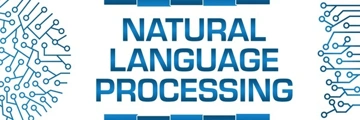
Navigating the Future: How Automation is Transforming the World of Work
The integration of automation in the workplace is reshaping industries by taking over repetitive tasks. This shift not only boosts productivity but also opens up new opportunities for workers willing to adapt. Automation enhances efficiency, allowing employees to focus on more strategic roles. While concerns about job redundancy exist, the emphasis on reskilling and continuous learning is crucial to thrive in this automated era. As technology evolves, so must our skills, ensuring a successful transition into the future of work.
Jackson Mitchell
09/11/2024 - 7 months ago

The Shift Towards Automation
In today's rapidly evolving work environment, work automation is becoming a central topic of discussion. As industries strive to enhance efficiency, the integration of automated processes is seen as a pivotal step. Automation refers to using technology to perform tasks that were traditionally done by humans, especially repetitive ones.
This shift is not just about replacing human labor but is more about complementing it. Automation can take over mundane tasks, allowing workers to focus on more complex and fulfilling activities. For instance, data entry, which can be tedious and error-prone, is now often handled by software, freeing up human resources for strategic roles.
Studies confirm that automation can perform repetitive tasks efficiently, leading to significant productivity increases in businesses. This efficiency helps companies to not only save time but also reduce errors, which are common in manual processes.
Impact on Employment
A common concern regarding automation is its impact on employment. While it is true that some jobs may become redundant, new opportunities are also created. For example, as machines take over repetitive tasks, there's a growing demand for roles in programming, maintenance, and management of these automated systems.
The key is adaptation. Workers need to be open to learning new skills that align with the technological advancements in their fields. Many companies provide training programs to help their employees transition smoothly into new roles that automation creates.
Furthermore, automation can lead to improved working conditions. By reducing the burden of repetitive tasks, employees can enjoy a more dynamic and engaging work environment, which can lead to higher job satisfaction and reduced stress levels.
Boosting Productivity
Automation promises to boost productivity by enabling companies to do more with less. When machines handle routine tasks, businesses can allocate human talent to areas that require creativity and critical thinking. This not only enhances productivity but also innovation.
For instance, in the manufacturing sector, automated assembly lines have significantly increased output while maintaining quality. This allows companies to meet higher demands without compromising on standards.
Moreover, automated systems can operate 24/7 without fatigue, ensuring consistent productivity. This continuity can be a major advantage in industries where time and efficiency are crucial.
Preparing for the Future
To thrive in an automated world, it's essential to stay informed and proactive. Adults with lower educational backgrounds might feel intimidated by these changes, but resources are available to help bridge the gap. Community colleges and online courses offer training in basic digital skills and more advanced technologies.
Governments and organizations are also stepping up to support workers in this transition. Initiatives that focus on reskilling and upskilling the workforce are crucial to ensure everyone can benefit from the opportunities automation brings.
Finally, embracing a mindset of continuous learning will be key. As technology evolves, so too must our skills and approaches to work. By staying adaptable, workers can navigate the changing landscape and find success in the new world of work.


















